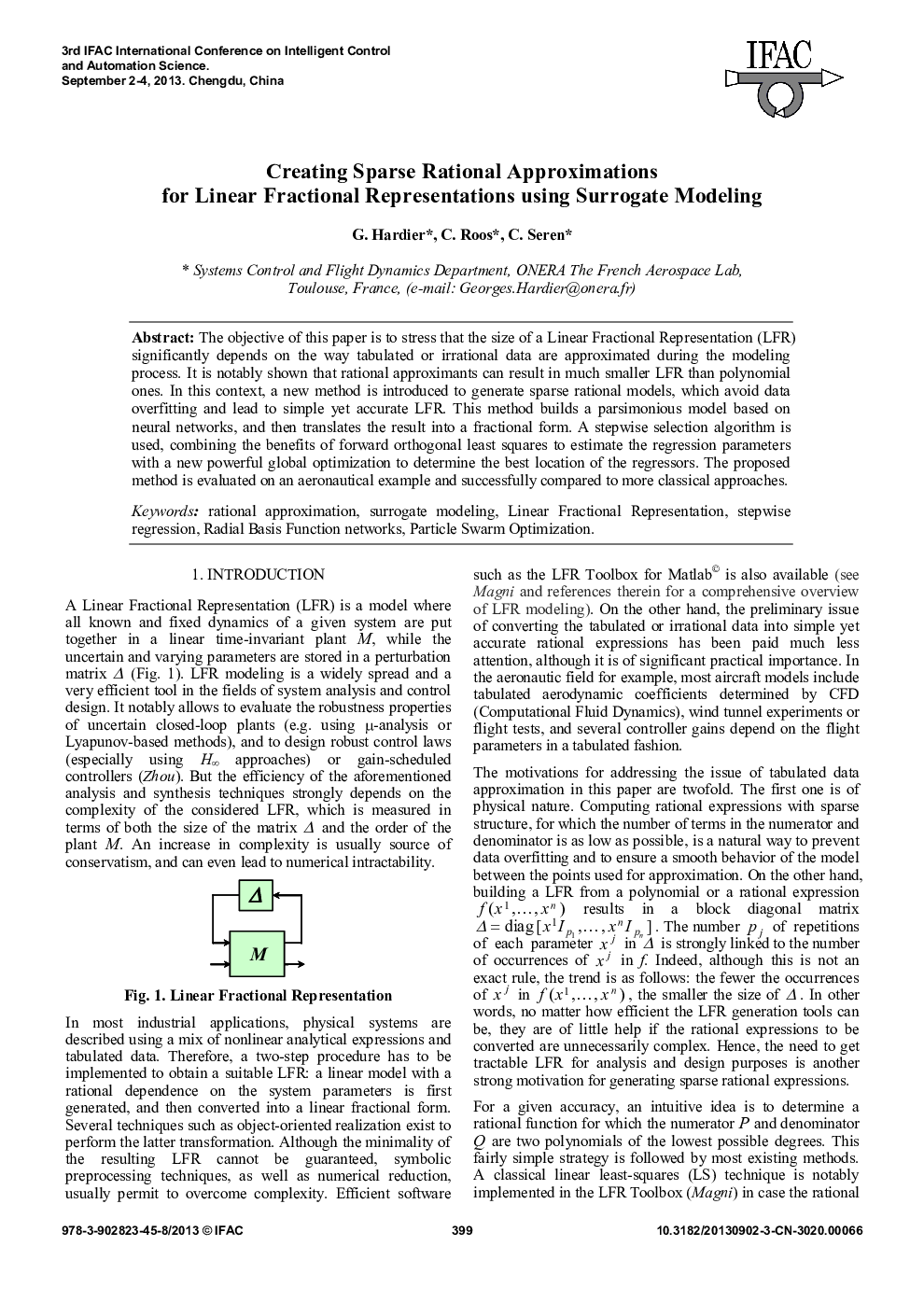| Article ID | Journal | Published Year | Pages | File Type |
|---|---|---|---|---|
| 714936 | IFAC Proceedings Volumes | 2013 | 6 Pages |
The objective of this paper is to stress that the size of a Linear Fractional Representation (LFR) significantly depends on the way tabulated or irrational data are approximated during the modeling process. It is notably shown that rational approximants can result in much smaller LFR than polynomial ones. In this context, a new method is introduced to generate sparse rational models, which avoid data overfitting and lead to simple yet accurate LFR. This method builds a parsimonious model based on neural networks, and then translates the result into a fractional form. A stepwise selection algorithm is used, combining the benefits of forward orthogonal least squares to estimate the regression parameters with a new powerful global optimization to determine the best location of the regressors. The proposed method is evaluated on an aeronautical example and successfully compared to more classical approaches.
